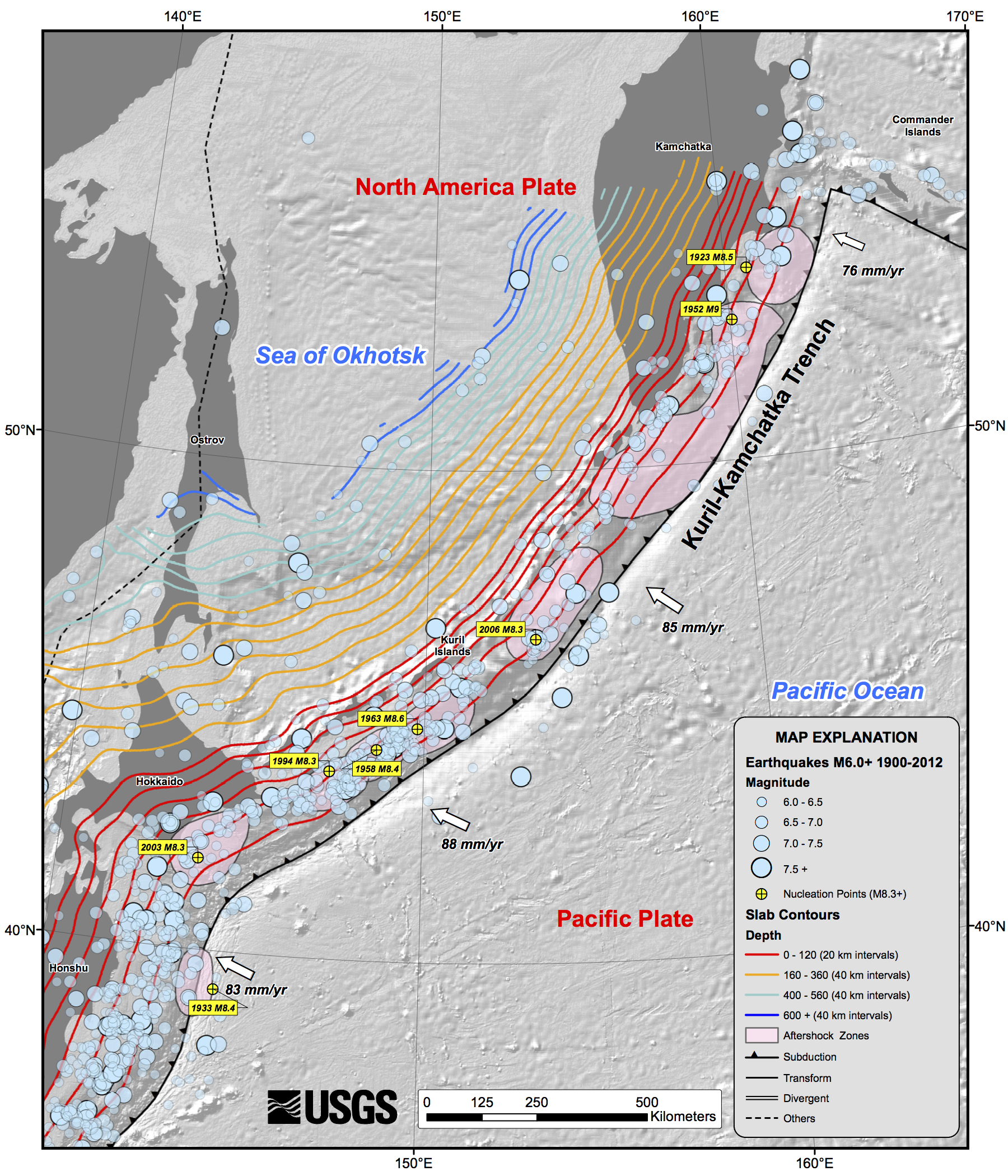
It's confirmed: The largest deep earthquake ever recorded happened in May off the coast of Russia. But this massive temblor is still a mystery to scientists.
The magnitude-8.3 earthquake occurred on May 24, 2013, in the Sea of Okhotsk, deep within the Earth's mantle. The earthquake, described today (Sept. 19) in the journal Science, is perplexing because seismologists don't understand how massive earthquakes can happen at such depths.
"It's the biggest event we've ever seen," said study co-author Thorne Lay, a seismologist at the University of California, Santa Cruz. "It looks so similar to shallow events, even though it's got 600 kilometers of rock on top of it. It's hard to understand how such an earthquake occurs at all under such huge pressure."
Fast rupture
The Sea of Okhotsk earthquake occurred about 378 miles (609 km) beneath the Earth's surface, at a crack where the Pacific Plate was pressing into the mantle, the layer of hot, plastic rock that sits below the crust. Despite the depth at which it occurred, the quake was felt by people in Russia. (There were no injuries or property damage.) [The 10 Biggest Earthquakes in History]
By analyzing global seismological data, researchers determined that the quake was the biggest deep earthquake ever recorded. A prior deep earthquake, in Bolivia in 1994, was the same magnitude, but released less energy.
The rupture occurred at lightning-fast speeds of roughly 9,000 mph (14,400 km/h).
Sign up for the Live Science daily newsletter now
Get the world’s most fascinating discoveries delivered straight to your inbox.
"It ruptured just like a breaking of the glass," Lay told LiveScience's OurAmazingPlanet. "And yet it's under this huge pressure, so that's something of a mystery. How does it happen?"
One possibility is that water or liquid carbon dioxide somehow seeped into the crack to lubricate it, thereby allowing the two slabs of rock to slide past each other more quickly.
But though water and gas from the ocean may seep into the shallower depths of the Earth's surface, it's difficult to see how water could seep so deep below.
"There may be some source of fluid that we haven't recognized," Lay said.
Rock transformation
Another possibility is that the main type of rock found at this depth, called olivine, goes through a mineral transformation because of the enormous pressures it is under, which then triggers sliding between different types of rock.
A second paper in the same issue of Science bolsters the case for mineral transformation as the culprit for massive deep earthquakes.
In that study, researchers subjected a tiny chunk of olivine, just a few hundredths of an inch wide, to pressure 50,000 times atmospheric levels — equivalent to the pressure felt deep inside the mantle.
The olivine transformed to a different crystal structure called spinel, and shear waves (one of the two main types of waves generated by earthquakes) began propagating incredibly fast.
"These were propagating fast enough that they could radiate ultrasonic waves that we recorded," said study co-author Alexandre Schubnel, a materials scientist at the Centre National de la Recherche Scientifique in France.
The waves also had similar properties to those found in deep earthquakes, Schubnel said.
For instance, the transformation of olivine into its high-pressure crystalline structure is irreversible, so the rock couldn't experience aftershocks. In deep earthquakes, aftershocks are also uncommon, Schubnel said.
Even though the sample was tiny and the nano-earthquakes induced were a million, billion times less powerful than the biggest earthquakes, the physics behind the phenomenon is still the same, Schubnel said.
Both researchers said they were aware of the other's work, but that more research will be needed to pinpoint the cause of the Russian quake.
Follow Tia Ghose on Twitter and Google+. Follow OurAmazingPlanet @OAPlanet, Facebook and Google+.Original article at LiveScience's OurAmazingPlanet.

Tia is the managing editor and was previously a senior writer for Live Science. Her work has appeared in Scientific American, Wired.com and other outlets. She holds a master's degree in bioengineering from the University of Washington, a graduate certificate in science writing from UC Santa Cruz and a bachelor's degree in mechanical engineering from the University of Texas at Austin. Tia was part of a team at the Milwaukee Journal Sentinel that published the Empty Cradles series on preterm births, which won multiple awards, including the 2012 Casey Medal for Meritorious Journalism.









